On the surface, this is a book about a woman and her dog who, one morning, find in the bathtub a very strange creature. Perhaps it’s an alien, perhaps it was summoned from the dark recesses of dreams, or it is a demon emerged from hell. Deprived of any text – apart from the very title and a prologue –, this book follows the permutations of these three characters and their respective bodies in a linear yet ambivalent fashion.
The book follows many of the typical trimmings of comics: pages organized in panels, panels coordinating actions and spaces visually, the use of emanata to convey movement and emotion, playing with inferences in order to construct meaning. But there are several choices that go against the grain of more common forms of comics-making (even though nothing as radical as the many experiments of groups such as Fréon, some authors from La Cinquième Couche or others). Page compositions that explode with lines and textures and semi-figurations that make us think of vegetation, tendrils, metastases, which can either be the cause of the consequence of the creature’s entrance in this book’s storyworld. In a word, organs, or better still, organs-without-bodies. These parts will occur again and again in certain moments of the book, “interrupting” the already non-naturalistic flow of its narrative.
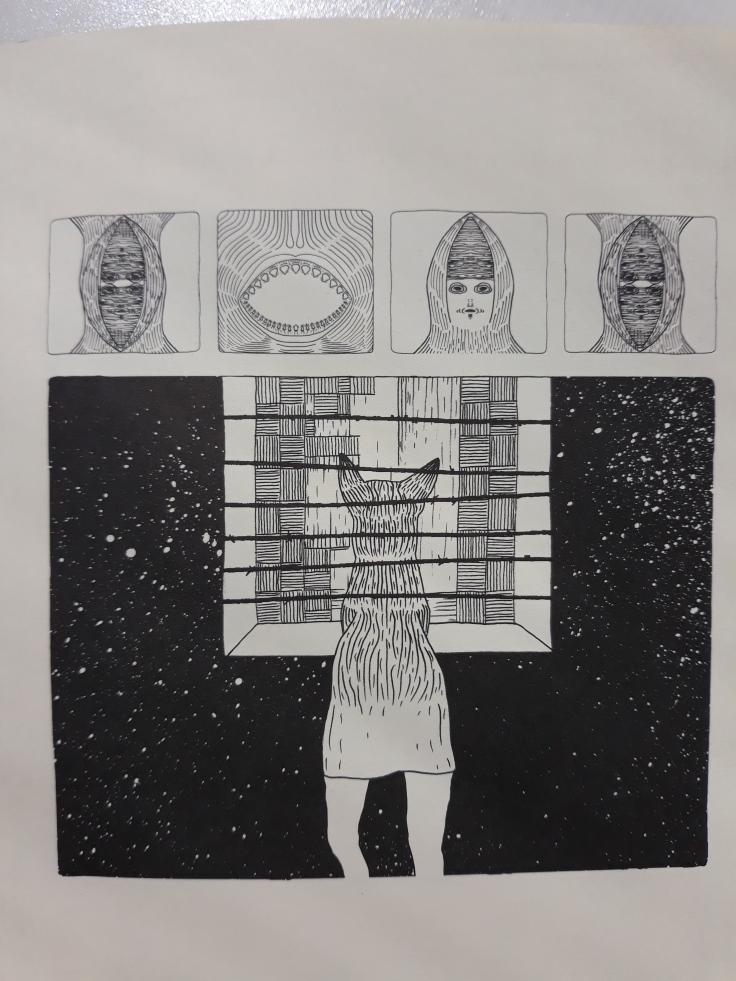
The first few pages show an intimate relationship between the dog and the woman: they sleep together in the same bed, she rubs her feet against its stomach while she smokes a cigarette, they hug in the sofa, and so on. Nothing unusual here, as most pet-owners know. But there are little visual clues that point to something more profound. The cup she uses to pour her coffee in has a dog printed on it, with its tail making up the handle. Before waking, we seem to see a body comprised of human legs and a dog’s torso and head. Maybe this is due to the comic’s own composition work, with two juxtaposed panels which show different objects but that, put together, create a composite. However, after the appearance of the alien creature, there are a few occasions where the author shows a number of metamorphoses taking place, fusing dog and woman into one body, or creating two bodies with interchangeable parts.
Even these descriptives may be erroneous, as the whole permutation remains ambivalent. But there is no doubt that Novia is exploring issues of that which Deleuzian readers would immediately recognize as a devenir, or in English, becoming: becoming-animal and becoming-human. Not a finished act of transformation, which would entail simply a complete passage of an objective structure (“human” or “woman”) into another (“dog”), with each respective organic construct intact, but rather an ongoing, never-ending fluidity between those two. The organic parts that extend beyond their bodies, and sometimes colonizes the space surrounding them, and sometimes even acts as the decorative ground of the page itself is nothing but an extreme consequence of this fluidity. It seems that the creature enhances this fusion, not only that relation that was already present, but also that other that may occur after the creature’s gone.
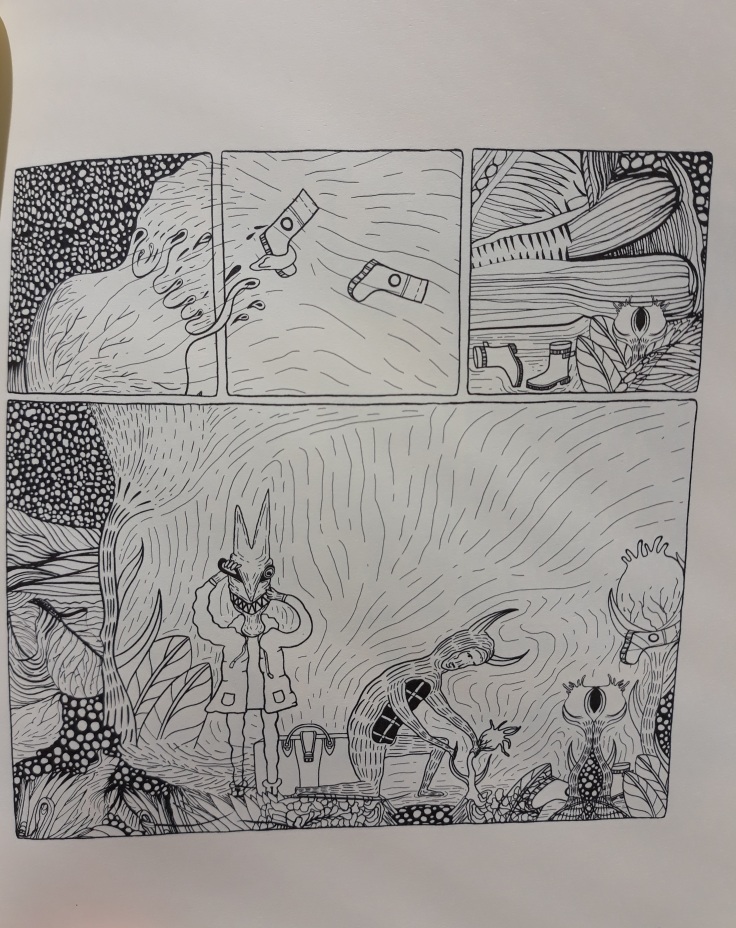
After the creature – or “the organism”, as the title states, if we believe it is mentioning only that intruder – appears, the woman places it on the sofa and permutations begin. Triangular, symmetrical with no apparent extremities, and only a vestigial, crustacean-like mouth, it sits like a Lovercraftian totem made of flesh.
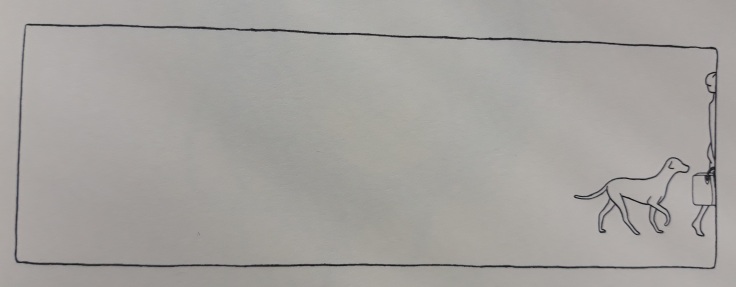
Afterwards, with apparent normalcy and the usual woman/dog division of roles, they go to the supermarket and buy “something” for the creature. It is really “something” as the author represents it as a bundle of circled lines and, for a moment, it seems that it substitutes the creature. Afterwards, back at the apartment, more durable bodily changes begin among every character, with the creature swallowing and regurgitating both the dog and the woman, it seems, and turning itself into a suitcase. The two becoming-characters then take a bus, carrying the suitcase, and go to a forest, where they cross a swamp, dig a hole in a clearing and put the creature there. Then it proceeds to change itself and the whole environment. At the “end,” dog and woman return and move away, carrying the suitcase. But there’s a difference. The suitcase is empty. And the woman is naked. We could also mention that the dog is naked, but he was always “naked.” The thing is: it it is the non-sexualized, brief nakedness of the woman, walking away, that reveals the common bond – that was there all along – between woman and dog a two living, biological, life forms. We do not witness any other typical cute moments of dog-owner love, but simply a walking away, drawn in a frankly more minimal style that the rest of the book.
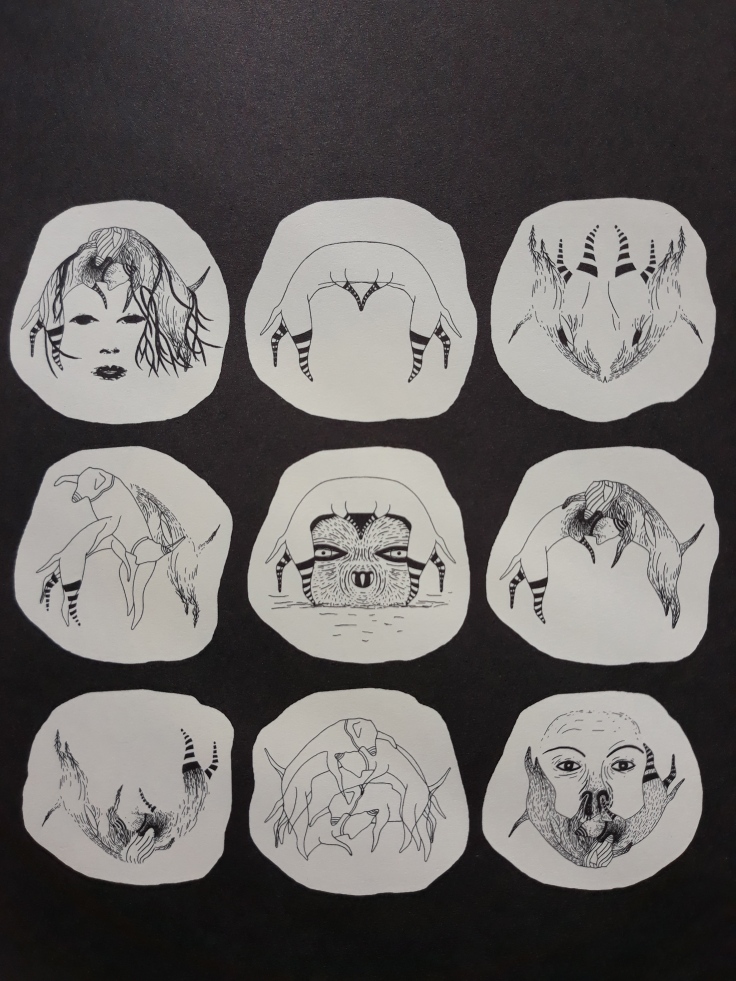
A small, 64 page hardbound book in black-and-white, L’Organisme is issued by the French experimental yet whimsical comics house Insula, perhaps the goal of the book is not the story of a strange invader that changes the relationship of two creatures of this Earth, but that of a non-normative organic teacher showing us the commonalities between living creatures that have been here all along.
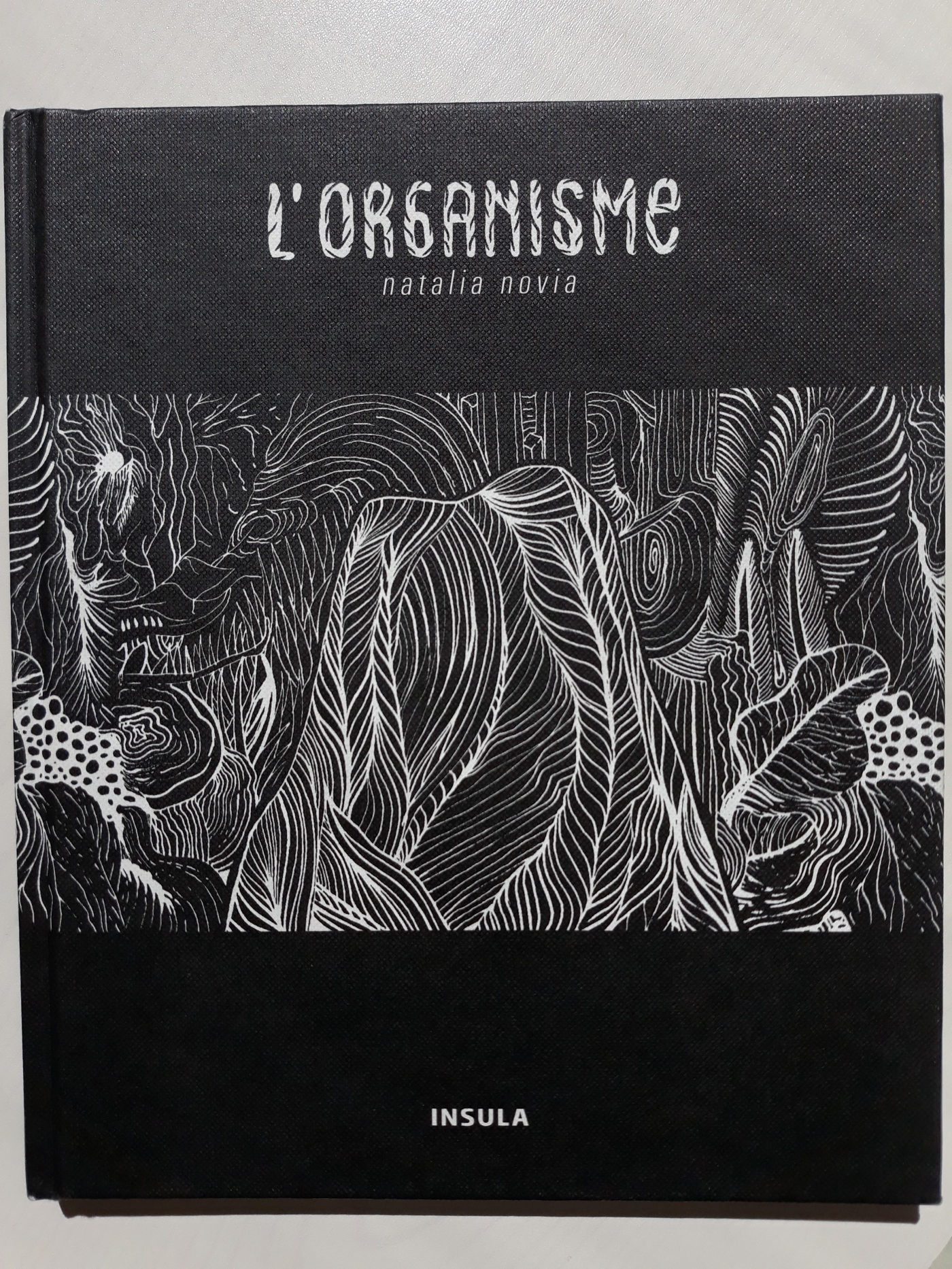

Deixe um comentário